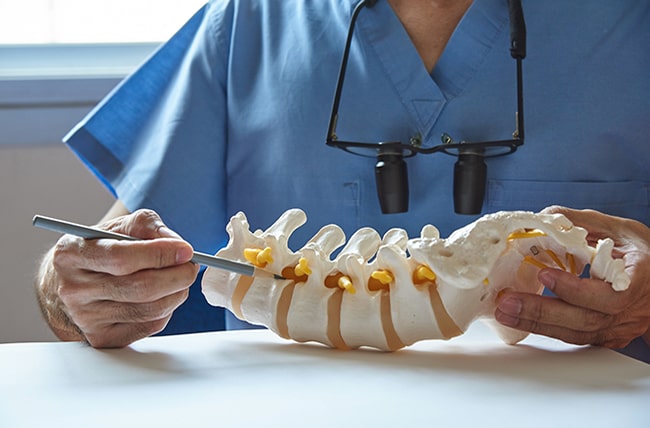An interlaminar spinal fusion system is a medical device consisting of two interbody spacers and a titanium connecting rod. They help relieve pain, prevent further damage, and facilitate spinal fusion. In addition, they are minimally invasive and have been shown to be beneficial in medical studies. Take a closer look at interlaminar spinal fixation systems and how they can help improve outcomes for patients with spinal instability or degenerative disc disease.
An interlaminar spinal fixation system is a spinal stabilization system designed to facilitate spinal fixation and stabilize the lumbar spine. The system consists of two interbody spacers and titanium connecting rods and is minimally invasively implanted. To return the spine’s normal spacing and alignment, interbody spacers are inserted between two neighboring vertebrae. A connecting rod, on the other hand, connects two spacers to stabilize the spine. The system’s design allows controlled movement while the spine heals and encourages the growth of new bone tissue.
For people with spinal instability or degenerative disc disease, these devices are meant to better spinal stability, lessen pain, and stop further harm. It is also an effective alternative to traditional spinal fusion, with fewer complications and faster recovery times.

WHAT ARE THE ADVANTAGES OF AN INTERLAMINAR SPINAL FIXATION SYSTEM?
For individuals with spinal instability or degenerative disc disease, this device provides a number of advantages.
Spine stabilization: The first and most important benefit is spinal stabilization. This can relieve pain and prevent damage in the future. The device does this by attaching itself to the vertebrae and immobilizing them, reducing instances of further spinal injury, pain, and even discomfort.
Promote spinal fusion: Furthermore, the system aids in spine fusion, a natural process whereby two neighboring vertebrae unite. Spacers used between the bodies create the perfect environment for new bone tissue to grow, making the spine more stable over time.
Minimally invasive surgery: Another important advantage of spinal fixation systems is minimally invasive surgery. This technique allows for a smaller incision than conventional spinal fusion surgery, which has lengthier recovery periods and bigger incisions. This means patients have less pain, shorter hospital stays, and can return to normal activities sooner.
Overall, spinal fusion systems offer a safer and more effective alternative to traditional spinal fusion surgery, providing patients with long-term relief from spinal instability, chronic spinal pain, and degenerative disc disease. Other benefits include the use of local anesthesia, bone, and soft tissue protection, reduced likelihood of epidural scarring and cerebrospinal fluid leakage, and reduced hospital stay and rehabilitation time, without interfering with future surgical alternatives including the ability to reverse surgical procedures.

HOW ARE INTERLAMINAR SPINAL FIXATION SYSTEMS USED?
During surgery, a small 2-4 cm incision is made with a precision-guided inserter/compressor. This instrument is designed to streamline the implantation process, making it easier and more precise for the surgeon. There is no need for additional tools, such as large compressors, thanks to the Precision Guided Inserter/Compressor. This allows safe placement of the implant with or without removal of the interspinous ligament. This reduces overall procedure time and makes implant placement and compression easier and more accurate.
To manage your spinal health visit Specialty Care Clinics.
